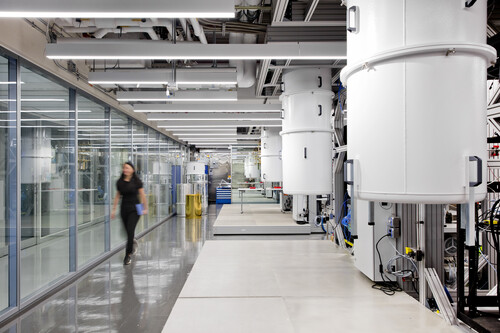It seems Israeli mathematician Gil Kalai was wrong after all. The Yale University professor has been highly critical of quantum computing for years. He argues that the increase in the number of states of quantum systems and their complexity will cause them to behave like classical computers, rendering the former’s superiority moot. In short, he claims fully functional quantum computers will never exist.
However, there are now powerful reasons to contradict this idea. Several companies claim they will have a quantum machine capable of correcting its errors by the end of the decade. These computers will be important because they can solve many problems that the most powerful classical supercomputers today can’t handle. For example, Xanadu, a young Canadian company founded in 2016, plans to have a million-photon-qubit quantum computer with error correction ready by 2030.
But Xanadu isn’t the only company aiming to reach this milestone. IBM plans to make Starling, its first large-scale quantum computer with error-correcting capabilities, available to customers in 2029.
It Will Perform 20,000 Times More Operations Than Current Quantum Computers
IBM will build the Starling quantum computer in a new data center in Poughkeepsie, New York. The machine will consist of 200 logical qubits, enabling it to perform 100 million quantum operations. Logical qubits offer a solution to the challenges associated with using physical qubits, which are highly susceptible to noise and prone to errors.
Each logical qubit is built on top of several physical qubits, allowing a single logical qubit to encode one qubit of quantum information with redundancy. This redundancy makes it possible to detect and correct errors in the physical qubits. Until recently, implementing a single error-immune logical qubit required an impractical number of hardware qubits, but IBM says it has found a solution to this problem. IBM engineers have published two technical articles detailing their strategy to develop a large-scale, error-correcting quantum computer.
Each logical qubit is built on top of several physical qubits, allowing a single logical qubit to encode one qubit of quantum information with redundancy.
The first article explains the procedure Starling will follow to process instructions and execute operations efficiently. The second article describes how the system will efficiently decode information in the physical qubits and identify and correct errors in real time using conventional computational resources.
Although IBM says Starling will be ready in 2029, the company hopes to reach other key milestones beforehand. By the end of 2025, Quantum Loon will test technology that connects qubits over longer distances within a single chip. In 2026, Kookaburra will be IBM’s first modular processor to store and process encoded information.
In 2027, Cockatoo will demonstrate the ability to interconnect two Kookaburra modules, showing that connecting several quantum chips as nodes of a larger platform is feasible. Finally, after Starling comes Blue Jay, which will bring together 2,000 logical qubits. This will theoretically enable Blue Jay to perform 1 billion quantum operations.
Image | IBM
Related | IBM Laid Off 8,000 Workers to Replace Them With AI. It Now Has More Employees Than Ever




View 0 comments